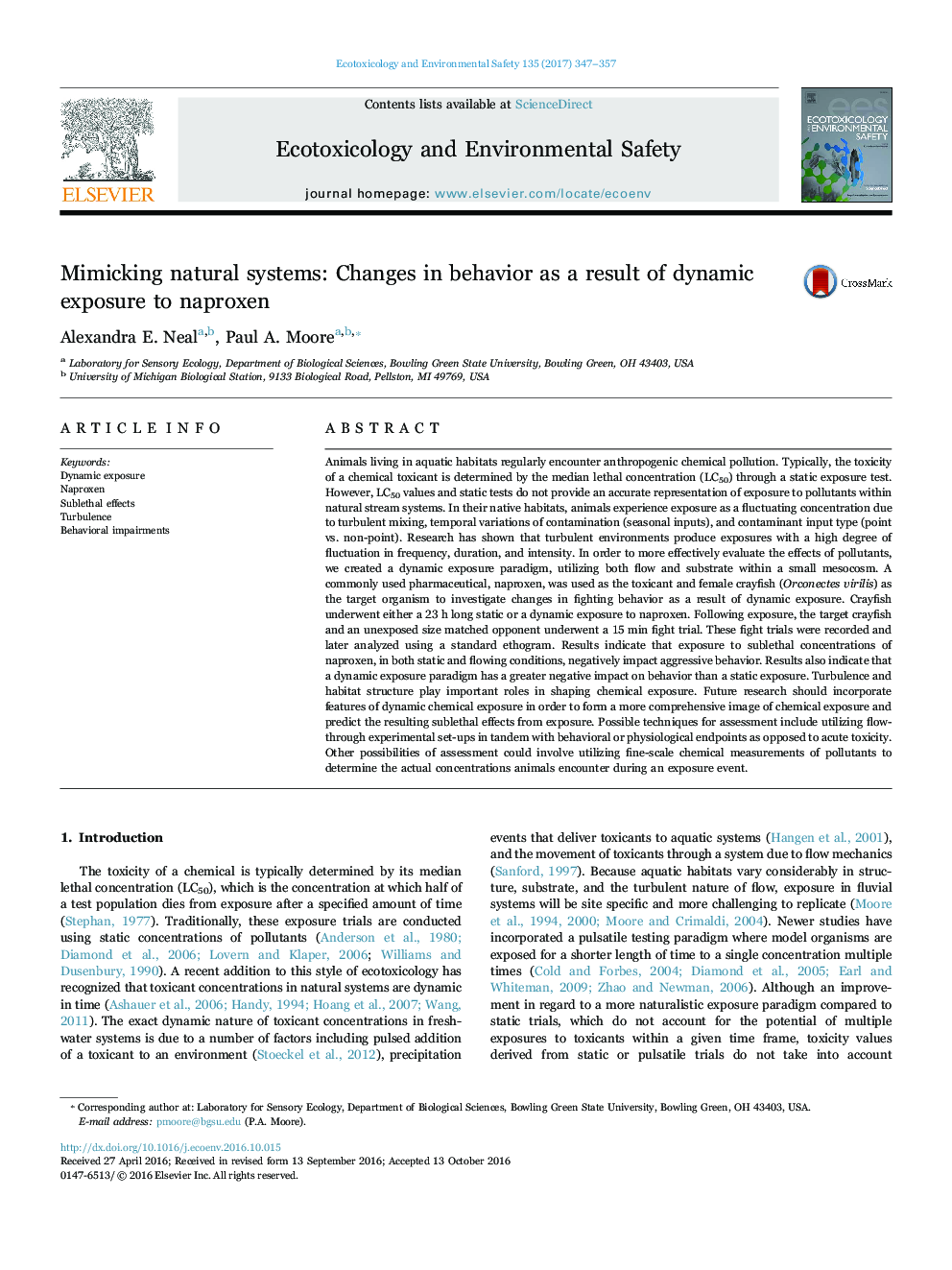| کد مقاله | کد نشریه | سال انتشار | مقاله انگلیسی | نسخه تمام متن |
|---|---|---|---|---|
| 8854906 | 1618929 | 2017 | 11 صفحه PDF | دانلود رایگان |
عنوان انگلیسی مقاله ISI
Mimicking natural systems: Changes in behavior as a result of dynamic exposure to naproxen
ترجمه فارسی عنوان
تقلید از سیستم های طبیعی: تغییر رفتار در نتیجه قرار گرفتن در معرض دینامیک ناپروکسن
دانلود مقاله + سفارش ترجمه
دانلود مقاله ISI انگلیسی
رایگان برای ایرانیان
کلمات کلیدی
قرار گرفتن در معرض دینامیک ناپروکسن، اثرات سوژه آشفتگی، اختلالات رفتاری،
موضوعات مرتبط
علوم زیستی و بیوفناوری
علوم محیط زیست
شیمی زیست محیطی
چکیده انگلیسی
Animals living in aquatic habitats regularly encounter anthropogenic chemical pollution. Typically, the toxicity of a chemical toxicant is determined by the median lethal concentration (LC50) through a static exposure test. However, LC50 values and static tests do not provide an accurate representation of exposure to pollutants within natural stream systems. In their native habitats, animals experience exposure as a fluctuating concentration due to turbulent mixing, temporal variations of contamination (seasonal inputs), and contaminant input type (point vs. non-point). Research has shown that turbulent environments produce exposures with a high degree of fluctuation in frequency, duration, and intensity. In order to more effectively evaluate the effects of pollutants, we created a dynamic exposure paradigm, utilizing both flow and substrate within a small mesocosm. A commonly used pharmaceutical, naproxen, was used as the toxicant and female crayfish (Orconectes virilis) as the target organism to investigate changes in fighting behavior as a result of dynamic exposure. Crayfish underwent either a 23Â h long static or a dynamic exposure to naproxen. Following exposure, the target crayfish and an unexposed size matched opponent underwent a 15Â min fight trial. These fight trials were recorded and later analyzed using a standard ethogram. Results indicate that exposure to sublethal concentrations of naproxen, in both static and flowing conditions, negatively impact aggressive behavior. Results also indicate that a dynamic exposure paradigm has a greater negative impact on behavior than a static exposure. Turbulence and habitat structure play important roles in shaping chemical exposure. Future research should incorporate features of dynamic chemical exposure in order to form a more comprehensive image of chemical exposure and predict the resulting sublethal effects from exposure. Possible techniques for assessment include utilizing flow-through experimental set-ups in tandem with behavioral or physiological endpoints as opposed to acute toxicity. Other possibilities of assessment could involve utilizing fine-scale chemical measurements of pollutants to determine the actual concentrations animals encounter during an exposure event.
ناشر
Database: Elsevier - ScienceDirect (ساینس دایرکت)
Journal: Ecotoxicology and Environmental Safety - Volume 135, January 2017, Pages 347-357
Journal: Ecotoxicology and Environmental Safety - Volume 135, January 2017, Pages 347-357
نویسندگان
Alexandra E. Neal, Paul A. Moore,
